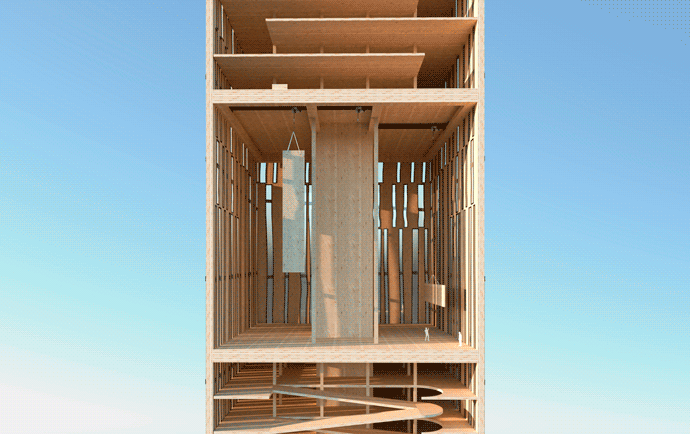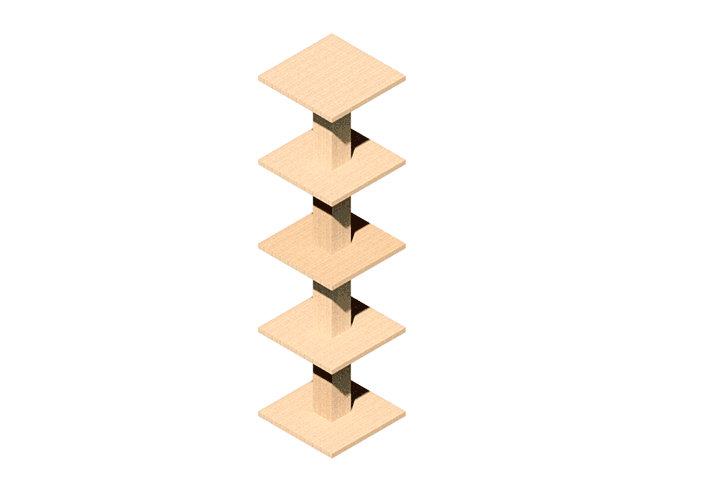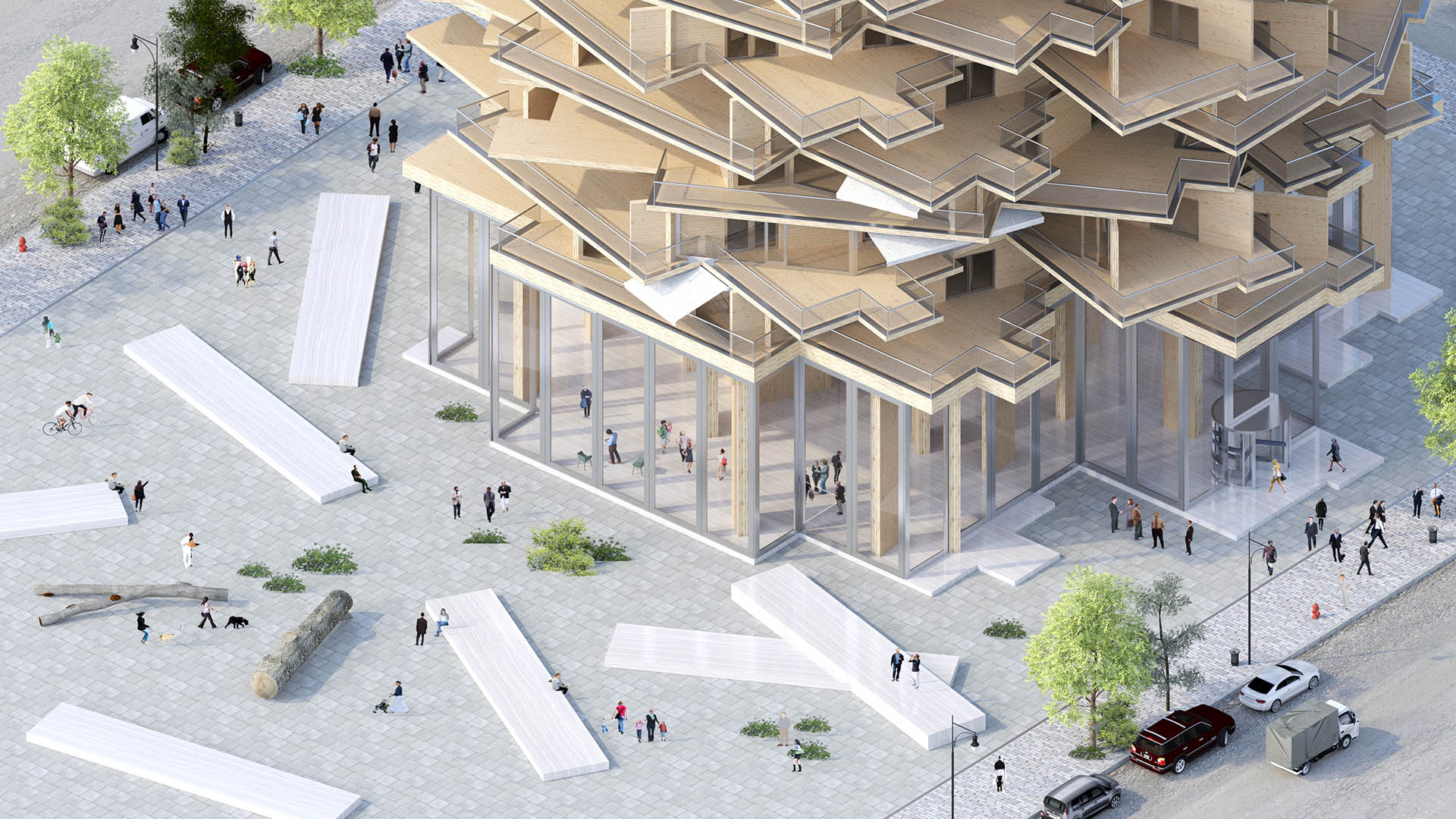Mass Timber and the Scandinavian Effect
1. On Effect: When the Guggenheim Museum opened in Bilbao, Spain in 1997 it produced an instantaneous reaction from around the globe. New pacts were formed between cultural institutions, architects, and cities all vying for their own version of this newly minted, shiny museum. Labelled the Bilbao Effect, the recipe was: iconic architecture plus cultural investment could reinvent dying cities. Similarly, the Dubai Effect, largely attributed to the rise of gravity-defying towers perpetrated during the construction boom of the 2000s, greatly altered Dubai’s skyline as a symbol for free market capitalism. In the late 19th century, post-Great Chicago Fire, the city of Chicago’s rebuilding effort resulted in the first tall building constructed out of structural steel. One-third the weight of its masonry counterpart, steel towers were fast to erect and exceeded fire code—a new type was born. With this disciplinary knowledge, in both material and structural innovation, the Chicago Effect shifted paradigms in the field. Studio participants will speculate on the possibilities of the Scandinavian Effect with interest in defining a new formula. Innovation around mass timber located in the Scandinavian countries suggests that another pattern is emerging—one that combines material, structural advancement, constructability, and architectural form. Much like the Bilbao, Dubai, and Chicago Effects, the Scandinavian Effect has the potential to travel to other contexts.
2. Scandinavia & the American South: The studio will take a close look at Sweden as a starting point for a series of research questions around mass timber. Knowledge discovered during a 10-day research trip in Sweden will inform the individual studio work, tracing potential effects from Scandinavia to the American South. Two design projects include: a single family house and mid-rise tower located in Raleigh-Durham, North Carolina.
3. CLT Blanks: When challenging the American house and the office tower, timber is both a familiar and unfamiliar material for the two. Familiar and possibly a seamless transition for the single family house, cross-laminated timber (CLT) offers an alternative to traditional stick-frame construction as 2X6s are laminated together into large panels instead of framed at 16” on center. However, constructing midrise towers out of wood is counter-intuitive, yet, parallels the revolutionary thinking of steel construction in the Chicago case. The studio will conceptually position CLT as a series of large structural sheets—or blanks—comprised of 3-ply, 5-ply, and 7-ply laminated timber panels measuring 9’ in width and 50’ lengths with endless possibilities for openings, shape, and geometry. These blanks will be used for elevation and interior walls, as well as, floor slabs (or plates). As blanks are sliced and cut into rooms for a house or multiplied into stacks for a mid-rise tower, CLT blanks becomes a prime material for testing architectural and structural ideas.
4. Aesthetics of Wood: From plywood-veneered interiors and soft white-wash kitchen cabinetry to IKEA’s 2015 Skogsta furniture collection and Sam Jacob’s Plank Scarf at £30, the image of wood is on-trend. Donald Judd’s materials listed as “douglas fir plywood in 6 units” mounted on the gallery wall follows the proportions of standard sheet material while Rachel Whiteread’s “Untitled (Felt Floor)” are resin felt castings of a 120-year-old wood floor—meaning it looks like wood, but it is not wood. As contemporary artists grapple with real and fake imagery of wood, architects absorb the image of wood into contemporary interiors. Defining the aesthetic of wood as a representational device and tectonic question will become central to positioning the Scandinavian Effect.
Note: As a member of the instructional team, Nelson Byun will serve as Teaching Associate for this studio.
Projects
-

300 Panels, 400 Cuts, 400 Bandages
Jennifer Bonner and Hanif Kara, Instructors
Spring 2020
-

2020 James Templeton Kelley Prize: Anna Goga’s “Porch House + 300 Panels, 400 Cuts, 400 Bandages”
Jennifer Bonner, Instructor
Spring 2020
-

A Pile of CLT
Jennifer Bonner and Hanif Kara, Instructors
Spring 2020